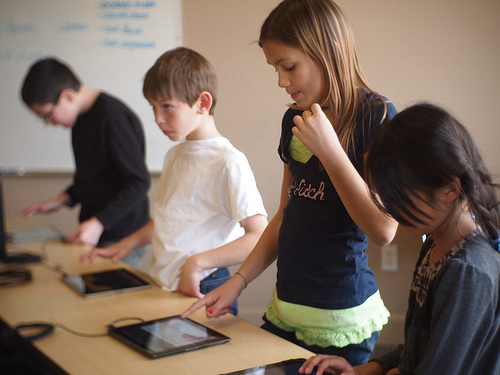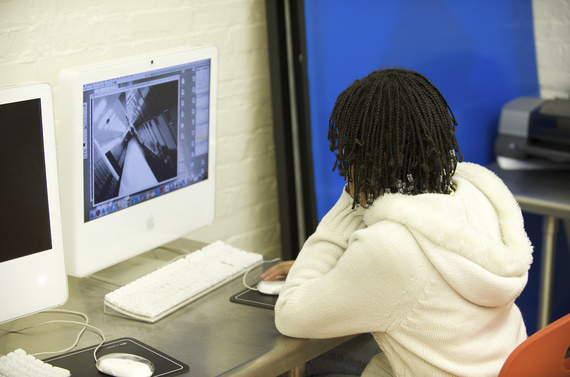Former LAUSD Superintendent John Deasy insisted it was a civil rights and educational imperative to make technology available to all students. But the implementation of the Common Core Technology Project which already reached 47 schools throughout the Los Angeles School Unified School District was riddled with problems from the start.
The CCTP project's vision was to "have a device in the hands of every LAUSD student to close the Digital Divide." Though well intentioned, it would appear that district policy corners were breached in attempt to fast-track the project and now it's getting aborted altogether.
Under pressure and allegations of manipulating the contract bidding process for the program, Supt. John Deasy resigned from his position last October. Formerly retired Supt. Ramon C. Cortines has since stepped in and is now taking the program to financial task and moving in a different direction.
"I don't believe we can afford a device for every student," Cortines said Friday. (In January, Apple posted an $18 billion profit, the largest in its history.) "Education shouldn't become the gimmick of the year."
In hindsight, it's easy to see that the district wasn't prepared to address adequate implementation timelines for CCTP, or how the program would be funded over the long term. It was also discovered that students learned how to bypass security filters so they could freely browse social networking sites originally blocked by LAUSD instead of using the equipment as it was originally intended. Distribution of the iPad was carried out in phases, so many students never had the opportunity to access the new technology equipment given the amount of bureaucratic red tape that exists from the time new materials are purchased - to it reaching the classroom.
According to the Los Angeles Times, the district has already purchased more than 120,000 iPads and more than 18,000 laptops. It's unclear how many students actually received them and how the equipment will be reutilized to benefit the students moving forward.
Cortines plans to implement a task force to help plot the future of technology throughout LAUSD -- the second largest school district in the United States serving over 650,000 students. He also intends to bring forward a $1-billion plan to upgrade some of the district's oldest campuses, along with revamping teacher evaluation tools that the teachers themselves would support.
So where does this leave our students? Education technology and access to social media provide a gateway into information that's fast and wide-reaching. Many (though not all) of today's students already have access to social media tools outside of the classroom, so providing equal distribution of those tools within the school environment for low-income communities has its benefits.
Students are moving deeper into a digital era that requires their familiarity with technology and social media in order to advance to higher education and the work force. Deasy wasn't off-base when he stated that equal access to technology is a civil rights issue for LAUSD, he just wasn't working with an infrastructure that could accommodate an ambitious project like this one so quickly.
Effective implementation strategies must be evaluated and endorsed by teachers and school administrators who are actually on the front line with students too. Are they prepared with lessons and supported by the school environment to receive this new equipment? Would they actually use it when given the chance?
More importantly, are the "systems" for contracting with outside projects and vendors established by LAUSD's governing body making it too difficult for innovative programs to get off the ground in the first place?
So once again it's back to the drawing board for effectively incorporating educational technology into the classrooms for those who need it most within LAUSD. Let us hope for the sake of the students, that this next LAUSD "task force" is made up of actual parties who exist outside its ivory tower as well.
Originally published on Literatigurl.com
Kimberly Cooper, MA is a writer, activist and former chief of operations for the "Reducing Childhood Obesity" initiative - a partnership between First 5 LA and the Los Angeles County Department of Public Health. She's spent nearly 20 years working in project development for entertainment media, nonprofit and community based youth organizations throughout Los Angeles. Her writing has also appeared in Huffington Post, Los Angeles Times and San Francisco Chronicle.


